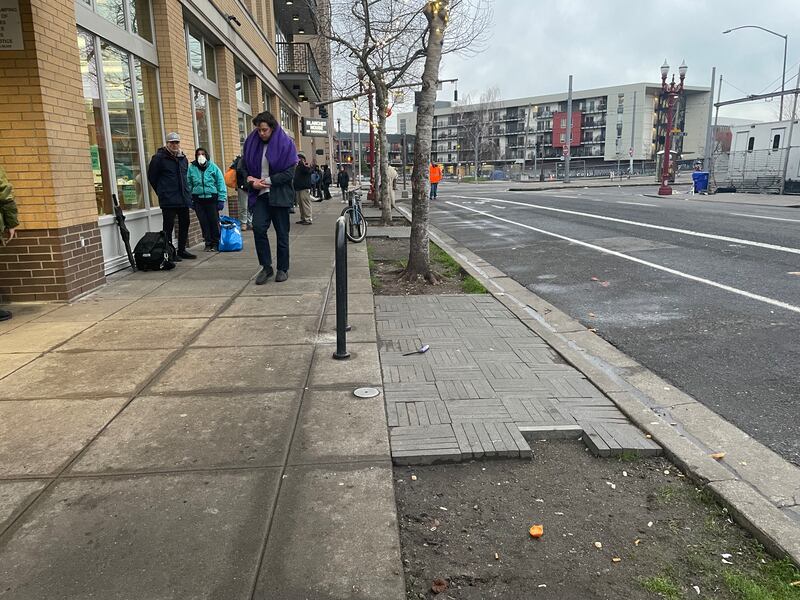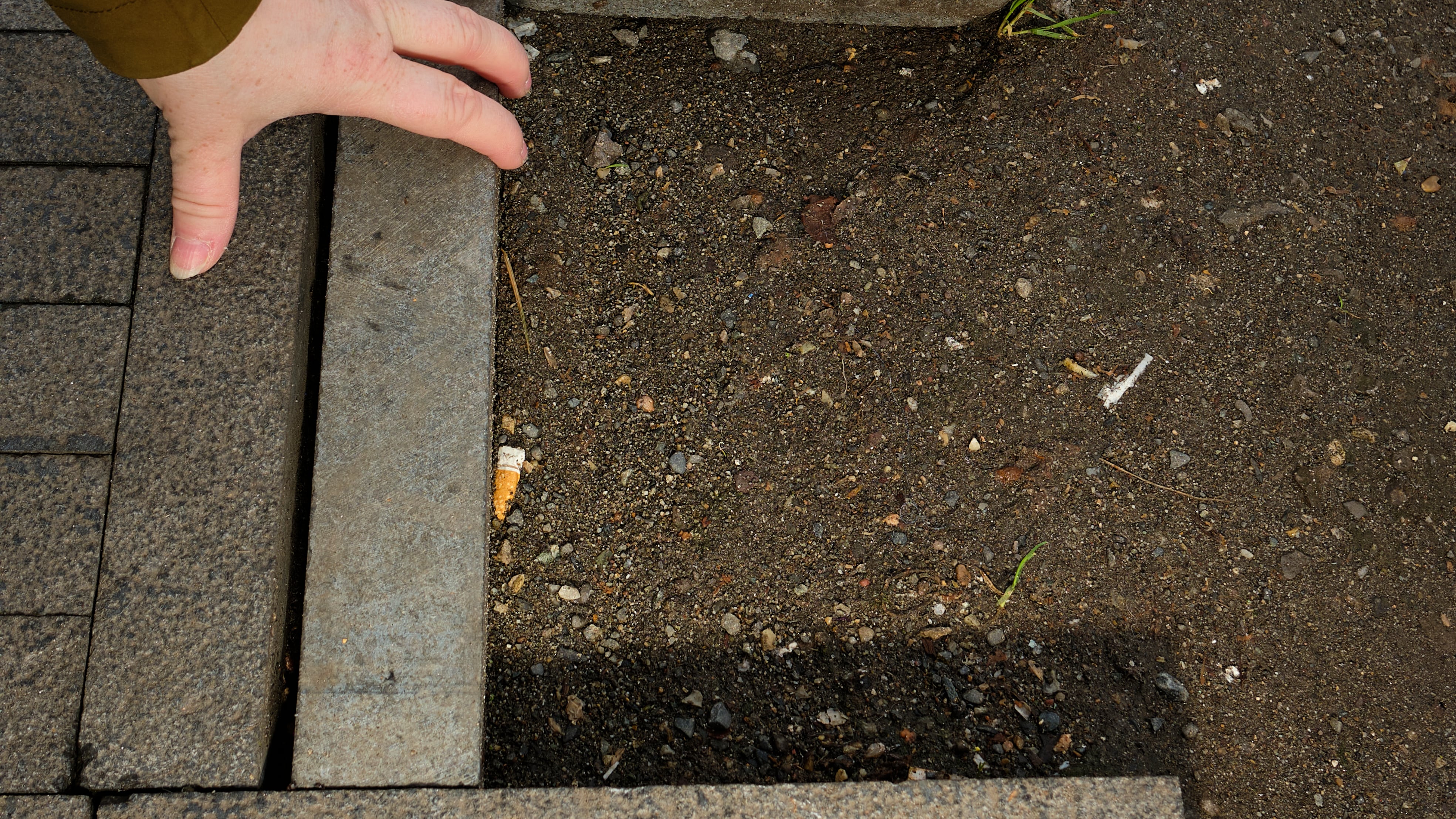Location: Northwest 3rd and 4th avenues, north of West Burnside Street.
Problem: In 2005, the city of Portland installed new sidewalks along 3rd and 4th, part of a $5 million renovation project intended to reinvigorate Chinatown. The project included a strip of black granite pavers along the sidewalk, perhaps to recall Chinese decorative motifs or alleviate root-induced cracks caused by the neighborhood’s aging cherry trees.
Now, local businesses say, designers’ decision to set the pavers in sand rather than mortar has had an unintended consequence: The hefty footlong bricks are extremely easy to remove, and they’re being used to vandalize local storefronts.
“That’s our main source of broken windows because there’s nothing holding them in,” says Jessie Burke, chair of the Old Town Community Association and general manager of The Society Hotel.
Seeking action from the city, she asked local business owners to submit photo evidence. Half a dozen obliged. One photo, from Angelina’s Greek Gyros, shows half a paver lying on the street beneath a shattered glass door.
Solution: The campaign by the Old Town Community Association got the ear of City Hall, so the Portland Bureau of Transportation is ponying up $40,000 to replace the missing pavers—and, this time, mortar them down.
The work is financed by the city and performed by contractors. It’s “part of the city’s overall response to safety concerns,” PBOT spokesman Dylan Rivera says.
An added bonus: “We didn’t have to buy any materials,” Burke says. A dozen pallets of leftover pavers were found in storage under the Ross Island Bridge.

Firsthand observations: On Feb. 14, light gray splotches of new bricks were visible along parts of 3rd and 4th avenues. But installers had yet to reach Blanchet House at the corner of 3rd Avenue and Glisan Street, where whole sections of the decorative pavers had been removed from the sidewalk.
The nonprofit has had to replace its windows at least eight times, at $3,000 a pop, although pavers are not always the culprit. “To be honest, it’s more or less a cost of doing business,” says its executive director, Scott Kerman. “Very rarely does it seem like someone’s doing it because they’re intentionally angry at us,” he added, noting that the nonprofit’s clientele often struggle with mental illness.
Still, the patchwork sidewalks pose a tripping hazard. At least one of Kerman’s staff members has been injured. “It’s a real dangerous situation,” he adds.
Kerman hopes the mortar will help. “It’s an act of opportunity. And if we remove the opportunity, vis-à-vis a brick, that’s going to help,” he says.
It isn’t hard to find the lost pavers. They’re scattered around nearby homeless encampments, often serving as makeshift tent stakes.
There, residents have put them to use in other ways as well. They burn them. Granite is excellent at retaining heat— and a good cooking aid when wood is scarce.
“You’ll see little piles of burnt pavers around where people had campsites,” notes Blanchet House spokeswoman Julie Showers.

